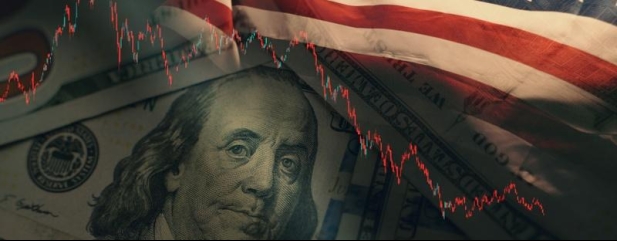Archived article
Please note that tax, investment, pension and ISA rules can change and the information and any views contained in this article may now be inaccurate.
Investors slash rate cut bets after strong September jobs report

It must be a thankless task predicting monthly US jobs data, which probably explains the widening range of forecasts in recent months. Estimates going into the latest (4 October) non-farm payrolls report spanned 60,000 at the bottom end to 220,000 at the top, so September’s 254,000 reading was a genuine upside shock.
Even more surprising was the unemployment level which inched down to within a cat’s whisker of 4% compared with an expected rise to 4.3%.
Meanwhile, average wage inflation also surprised to the upside growing at an annual rate of 4%. While the robustness of the labour market will be comforting to the Federal Reserve, which has expressed some concern in recent weeks, the inflation picture presents more of a challenge for monetary policy.
Investors instantly priced out the odds of another jumbo half a percentage point cut to rates in November. The US dollar rallied around 3% against the euro and sterling while 10-year US bond yields spiked to 4%, compared with a low of 3.74% at the beginning of October.
Stocks rallied with the S&P 500 adding nearly 1% but it was the small-cap Russell 2000 index which really shone, gaining 1.5% to within 10% striking distance of its all-time high achieved two years ago.
That should not come as a surprise as investors increasingly believe the Fed has successfully steered the economy to a soft landing. The latest Bank of America fund manager survey showed four fifths of respondents believe in this scenario.
A soft landing is defined as a deceleration of economic activity without the economy entering a recession.
The stronger than expected jobs report gives ammunition to those economists worried about a ‘no-landing’ scenario where the economy continues to expand while inflation remains stubbornly above the Fed’s target.
Talking to Bloomberg’s Surveillance programme, economist Mohamed El-Erian cautioned viewers that inflation ‘is not dead’. Add China’s latest surprise stimulus package to the mix and suddenly the risks appear more tilted towards inflation than the labour market.
There are other factors which could increase inflationary pressures down the track. Tensions in the Middle East have sent Brent crude oil prices 15% higher in the last week to almost $85 per barrel. While the price of gold slipped after the jobs report, prices remain near record levels after jumping by around a third year to date.
On the domestic front, while the potentially disruptive US port strike has been resolved, workers got a 61% pay hike while unions at General Motors (GM:NYSE) and Boeing (BA:NYSE) are holding out for their own big pay deals.
Important information:
These articles are provided by Shares magazine which is published by AJ Bell Media, a part of AJ Bell. Shares is not written by AJ Bell.
Shares is provided for your general information and use and is not a personal recommendation to invest. It is not intended to be relied upon by you in making or not making any investment decisions. The investments referred to in these articles will not be suitable for all investors. If in doubt please seek appropriate independent financial advice.
Investors acting on the information in these articles do so at their own risk and AJ Bell Media and its staff do not accept liability for losses suffered by investors as a result of their investment decisions.
Issue contents
Feature
Great Ideas
News
- Investors slash rate cut bets after strong September jobs report
- All eyes on inflation after strong US jobs report
- No let-up for Spirax Group as earnings forecasts and the share price drift lower
- Data firm FD Technologies shares soar after First Derivative sale
- Positive news on selling prices fails to lift the mood among housebuilders
- Why is Watches of Switzerland buying a media company?
 magazine
magazine








